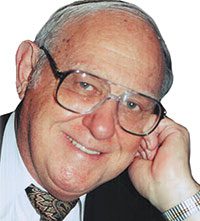Business succession: Transfer your business to your kids — tax free

It's December in Chicago. Cold. Snowy. Blustery. What has the winter weather got to do with business succession? It's just too late to get any serious tax planning done.
What's my motive? I'm writing this in 2014. You will read it in early 2015... gives you almost a whole year to get your planning done. This article will give you an incentive to get started.
The number one question readers of this column ask is, “Irv, how do I transfer my business to my kids without getting killed by taxes?”
Here’s a true tax-victory story of how to do it —right. Read slowly if you own all or part of a family business (chances are this story is about you). Joe, a 61-year-old owner of Success Co. (a C corporation) called and wanted to know which of two plans he should choose. Here are the important facts: Joe is married to Mary (53 years old). His son Sam (31) has worked in the business since he was 15. Sam owns one share of Success Co. stock: Joe owns all the rest of the stock: 99 shares. The business is worth about $6.5 million (professionally valued) and enjoys about 10% net profit growth each of the past five years. This profit growth should continue in the future. Joe’s total net worth is about $17.5 million including a residence, various investments (including real estate leased to Success Co. and a large portfolio of stocks and bonds) and $1.9 million in a profit-sharing plan.
Joe asked me to review two plans suggested by his professionals, his CPA and lawyer. (“Want a second opinion,” is what Joe said.) Both plans center around a $4-million life insurance policy on Joe. Plan #1: The policy would be owned by Sam. Joe would gift Sam the annual premiums. At Joe’s death, Sam would buy Success Co.’s 99 shares from Joe’s estate for $4 million (after discounts allowed by the tax law). Plan #2: Success Co. would own the $4 million in life insurance as keyman insurance and would redeem (buy) the 99 shares from Joe’s estate.
For either plan, the final results would be exactly the same: Sam would own 100% of Success Co. and the estate would have $4 million in cash (the life insurance proceeds) instead of $4 million in stock. First, the good news: Joe’s estate would owe no income tax on the sale of stock. Why?... Because the estate would get a raised basis equal to the fair market value of the 99 shares on the date of Joe’s death. Second, no estate tax because the $4 million of insurance proceeds will wind up in Mary’s trust and receive the benefits of the 100% tax-free marital deduction.
Sounds pretty good. Joe liked it.
But Joe still had one question… “Irv, can you improve the plans?” As a matter of fact, each of the plans – or some variations – is the most popular way of transferring a business to the next generation. Sorry, but two problems always cause us to turn thumbs down on such plans. Why? Because:
• The value of the stock will probably continue to grow and the excess value over the current $4 million value will enrich the IRS by 40 cents (using 2014 estate tax rates) for each $1 of the excess. That’s $400,000 per million in unnecessary estate tax. Ouch!
• When Mary passes, the IRS will be guaranteed a big payday; 40% of the $4 million in life insurance. That’s right, the IRS will get $1.6 million and the family only $2.4 million. An outrage!
Note: The tax rates may change, thus changing the numbers a bit, but the concepts will stay the same.
What should you do if your facts (own all or a portion of a family business that you want to transfer to your younger family members) are the same or similar to Joe’s facts? Here’s the three-step plan we put in place for Joe (and you should consider):
• Step 1 — Success Co. elected S Corporation Status. We recapitalized (100 shares of voting stock, 20,000 shares of nonvoting stock) the company, so Joe would own 99 percent of the voting stock – 99 shares – (Joe keeps control of Success Co. for life).
Then, Joe transferred the nonvoting stock – 19,800 shares – to an intentionally defective trust (IDT) in exchange for a $4 million note. The nonvoting stock is out of Joe's estate. The IDT owns the $4 million policy and pays the premium. The IDT gets the nonvoting stock to Sam, (using the cash flow of Success Co.) after Joe's note is paid. All tax-free for Joe and Sam. No income tax. No estate tax.
• Step 2 — We used the $2.1 million Joe has in an IRA to implement a strategy called a “Retirement Plan Rescue” (RPR) to acquire $6 million of second-to-die life insurance on Joe and Mary. We also created an irrevocable life insurance trust (ILIT) to own the insurance. None of the $6 million in insurance proceeds will be subject to income tax or estate tax. Every penny will go to Joe’s and Mary’s family tax-free.
• Step 3. — We created a family limited partnership (FLIP) to hold Joe’s investments (real estate and securities portfolio) worth about $8 million combined and started an annual (at the rate of $28,000 per child) gift-giving program to give limited partnership interests in the FLIP to Joe’s and Mary’s other two children (neither are in the business). The beauty of a FLIP is the discount allowed by law of 35%, so the value of the FLIP for tax purposes was only $5.2 million (after the $2.8 million discount). Cool!
The three-step plan we substituted for the original two proposed plans will increase the amount of wealth Joe and Mary will leave to their family by an estimated $5.5 million more than either of the two old original plans. Best of all, the new plan has zero impact on Joe’s and Mary’s lifestyle and they have absolute control of all their assets — including Success Co. — for as long as either of them is alive.





